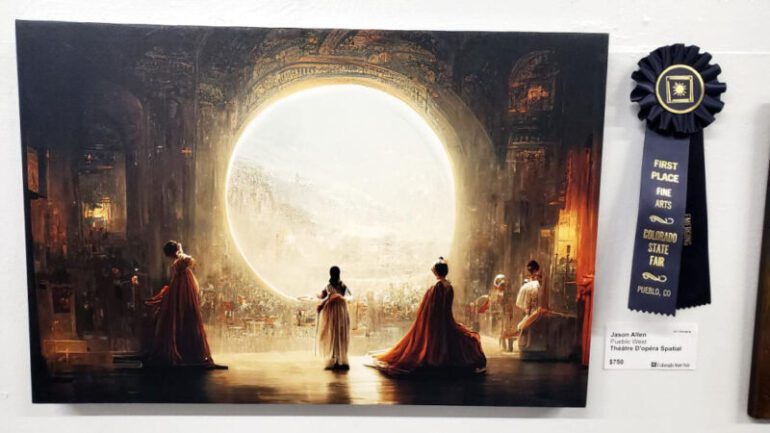TL;DR:
- US Copyright Office refuses to grant copyright protection to AI-generated artwork.
- Artwork, titled “Theatre D’opera Spatial,” won Colorado State Fair contest.
- Copyright denied due to the absence of human authorship in significant AI-generated content.
- Artist, Jason M. Allen, is required to disclaim AI-generated portions for copyright registration.
- Similar cases in the past resulted in partial copyright protection for human-arranged portions.
- Artist’s appeal was rejected; he believes this decision could lead to unforeseen challenges.
- Ongoing debate on the intersection of AI and creative ownership.
Main AI News:
In a significant decision, the US Copyright Office Review Board has refused to grant copyright protection to an AI-generated artwork that gained notoriety for winning a prestigious art contest at the Colorado State Fair last year. The primary reason behind this rejection is the absence of human authorship, a fundamental requirement for copyright registration. This ruling has ignited a contentious debate over the ethical implications of AI-generated art.
The Copyright Office’s decision revolves around the contention that the artwork in question contains more than a minimal amount of content generated by artificial intelligence (AI). Consequently, any such AI-generated content must be explicitly disclaimed during the copyright registration process. In essence, the artist, Jason M. Allen, would need to formally renounce any claim of ownership or authorship over the AI-generated elements within the work. This stipulation is in accordance with established Copyright Office precedent and judicial review, which stipulate that human authorship is a prerequisite for copyright registration.
Artist Jason M. Allen created the contested artwork, titled “Theatre D’opera Spatial,” in August 2022. He utilized the Midjourney image synthesis service, a relatively new tool at the time, to craft this futuristic masterpiece, which depicted a royal scene. This artwork clinched the top prize in the “Digital Arts/Digitally Manipulated Photography” category at the fair.
When Allen applied for copyright registration in September, a Copyright Office examiner sought additional information concerning Midjourney’s role in the creative process. Allen disclosed that he had provided numerous revisions and text prompts, engaging in the creative process at least 624 times to develop the initial version of the image. Subsequently, he further refined the image using Adobe Photoshop.
However, the Copyright Office requested that Allen disclaim the portions of the image generated by Midjourney to qualify for copyright protection. In a significant turn of events, Allen adamantly refused to do so, leading to the rejection of his application. The Copyright Review Board upheld this decision, contending that the artwork, as a whole, did not meet the criteria for copyright protection due to the substantial presence of AI-generated content.
In his appeal, Allen argued that the Copyright Office was making a subjective judgment on the utility of creative tools and that denying copyright protection for AI-generated artwork would create a void in ownership. Unfortunately for Allen, the office dismissed this argument.
This is not the first instance of the Copyright Office denying copyright claims for AI-generated art. In a similar case in February, the office revoked copyright protection for images produced by artist Kris Kashtanova using Midjourney for the graphic novel “Zarya of the Dawn.” However, it allowed copyrighting for the portions of the work arranged by humans. More recently, the office rejected copyright registration for an image claimed to be autonomously generated by computer scientist Stephen Thaler’s AI system.
In response to the office’s decision, Allen expressed his expectation of eventual success in challenging the ruling. He warned that if the decision stands, it could give rise to unforeseen challenges and complexities for the copyright office, leaving us with more questions than answers. This decision undoubtedly marks a pivotal moment in the ongoing dialogue about the intersection of AI and creative ownership.
Conclusion:
This decision underscores the critical requirement of human authorship for copyright protection, particularly in cases involving AI-generated content. It sets a precedent that could impact the AI-generated art market, potentially necessitating clearer guidelines and distinctions between human and AI contributions in creative works to secure copyright protection. Artists and creators using AI tools must be aware of these developments and their implications for intellectual property rights.

